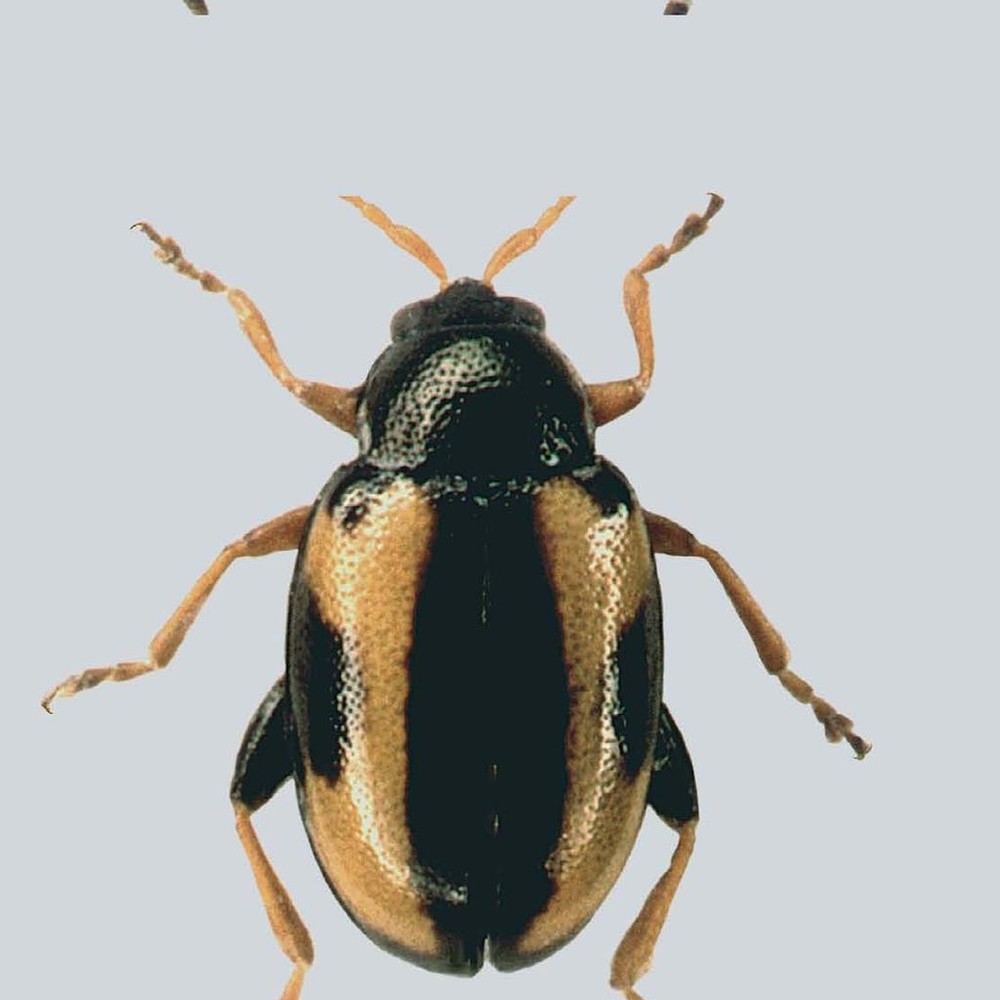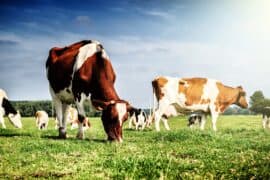Black leafy spurge flea beetle
(Aphthona czwalinae)

Description
Aphthona czwalinae is a species of leaf beetle known as the black leafy spurge flea beetle. It is used as an agent of biological pest control against the noxious weed leafy spurge (Euphorbia esula). The adult beetle is shiny black and about 3 millimeters long. The female lays eggs on the soil next to leafy spurge, its host plant, during the summer months. The larva emerges in 16 or 17 days. It is white with a light brown head. It goes to work feeding on the roots of the plant throughout the winter and spring and then pupates in the soil until emerging as an adult in early summer. As the larvae weaken the roots the adults feed on the leaves and flowers of the plant, killing the plant outright or allowing infection by opportunistic fungi. This beetle is native to eastern Europe and central Asia. It was first released as a biocontrol agent for leafy spurge in the United States in the late 1980s. It was thought to be a major factor is the success of biocontrol efforts for leafy spurge until it was discovered that most of what was thought to be A. czwalinae was in fact A. lacertosa. With this realization A. czwalinae stopped being an important component in Aphthona leafy spurge control. A. czwalinae had not been verified to persist in North Dakota or Minnesota for several years, until Roehrdanz documented it in Eastern Montana in 2006. Aphthona is a genus of beetle, in the leaf beetle family Chrysomelidae, native to Europe and Asia. More specifically, Aphthona are flea beetles, meaning they have enlarged hind legs for jumping away from potential danger. There are some 300 species known worldwide. This flea beetle genus is important because of the usefulness of some species in controlling leafy spurge, a major invasive weed in parts of western North America. Several Aphthona species have been taken from Europe and introduced into localized areas of the United States and Canada, and some success against the weed is being seen. The six species used for this purpose include A. abdominalis, A. cyparissiae, A. czwalinae, A. flava, A. nigriscutis, and A. lacertosa, though A. abdominalis apparently never established a viable population and was never introduced in Canada. Control is generally thought to be effective, but results vary from site to site, which has been attributed to soilborne pathogens, phenology of spring, soil texture, and leafy spurge density. Control is less effective in sandy soils.
Taxonomic tree:







